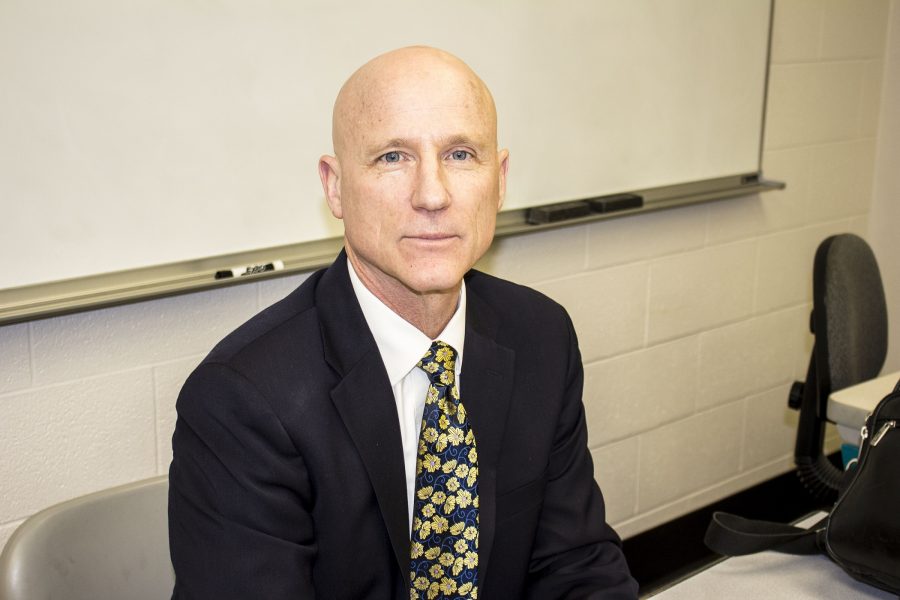Feeling SAD: When the Same Months Never Feel Quite Right
Kauffman said he started to feel symptoms of Seasonal Affective Disorder around 10 years ago.
March 13, 2017
Everyone experiences days when they feel sad, worn down and depressed. However, for some, there are certain times of the year that are especially difficult.
According to the Mayo Clinic, Seasonal Affective Disorder (SAD), also known as Seasonal Depression, is a type of depression related to the seasons of the year. Symptoms, which are often reoccurring, most often begin in the fall and continue throughout the winter months, but some people may experience SAD in spring or summer months.
SAD is characterized as being an intense feeling of sadness, depression, moodiness, and low energy, according to the Mayo Clinic.
James Kauffman, professor of communication studies, said he feels most these symptoms during the later winter months.
“I always get blue around the winter time,” Kauffman said. “It would start around November and December, and I really hated the month of February.”
Charlotte Dubois, IUS office services assistant, said she also feels the worst of her symptoms in the later winter months as well.
Dubois said she first started noticing it about 10 years ago when it seemed every year she would start to feel the same symptoms around the beginning of fall.
“I would begin to feel really sad, depressed, and have low energy,” Dubois said.
Dubois also said she feels mood swings that coincide with the weather, a lack of interest in socializing and activities, appetite changes, and some trouble with sleeping.
Kauffman said he has similar symptoms, describing an overall “blue” feeling, not wanting to do very much because of low energy, and wanting comfort foods. After a conversation with his doctor, it was determined that he has SAD and started looking into his treatment options.
After doing some research, Kauffman said he decided on bright light treatment, also known as light box therapy.
“I could tell almost immediately that, for me, bright light treatment would work,” Kauffman said. “I do [the bright light treatment] from about late October, or early November, until about March when the sun starts coming out.”
Dr. Michael Craig Miller, senior editor for Harvard Health Publications, said if lack of sunlight makes SAD symptoms worse, then adding in more sunlight could help.
He said bright light stimulates cells in the retina that connect to a part of the brain that controls circadian rhythms and by doing the treatment at the same time each day, it can fix one’s circadian rhythm and get rid of SAD symptoms.
“The sun doesn’t come out and it throws you off,” Kauffman said. “I think rigorous exercise can kind of help counteract that.”
Because of the rhythms our bodies experience, Kauffman said he could tell if he has gone a significant amount of time without his treatment.
“If I go a day or two without it, I can usually tell. It’s not terrible, but I can tell,” Kauffman said.
Dubois said she was recommended to try the light therapy, among other treatment plans.
After having the lights changed in her office, spending more time outdoors, and getting as much natural light in her home as she could, she noticed a difference in her symptoms.
Dubois also said to keep your goals in mind. She said taking vacations to somewhere sunny in January and February has been beneficial to her.
“Keep focused on making plans for things and events in the future, like planning a trip,” said Dubois said. “If it is possible to take a vacation somewhere warm and sunny during the months you suffer the most, it could be very beneficial.”

Some of the other treatment options that were described to Dubois include psychotherapy, having vitamin D levels checked and possibly taking a supplement, exercising more, and taking antidepressant medications.
Kauffman said staying active and engaging in rigorous exercise also helps him, but once the spring arrives and the sun comes out, his mood improves dramatically.
“By the time it gets to February I am just done,” Kauffman said. “That’s why when the change happens around March, it’s like a flip from black and white to color.”
For anyone suffering from SAD, Dubois said having support from another person can have a significant impact on treating its effects.
“I would recommend connecting with someone close to you who understands what you are going through and your symptoms,” Dubois said. “See if you can make a ‘contract’ or a ‘buddy system’ with this person to help motivate you to do things that you aren’t feeling up to doing.”
Dubois said that this contract or buddy system could help in situations where you may not want to socialize or exercise, and your “buddy” could be that motivational person for you to keep you going. Although you may not be motivated to do something in that moment, she said it can only help in the long run.
More awareness about SAD and support groups for SAD are ways Dubois said can be beneficial in the future. She said her primary care physician did not know what SAD was, but that she thought it was just depression.
Both Kauffman and Dubois said there is nothing to be ashamed of when it comes to thinking you may have SAD. Both recommended seeking help if you feel that you may need it.
“I want people to know there is no shame in having this disorder and not to feel there is something wrong with themselves or to feel bad about themselves,” Dubois said.


